UPDATE: we have it moving! Check out this video I made for two amazing individuals who helped fund our project and enabled me to buy so much robotics hardware to make it happen.
UPDATE: we have it moving! Check out this video I made for two amazing individuals who helped fund our project and enabled me to buy so much robotics hardware to make it happen.
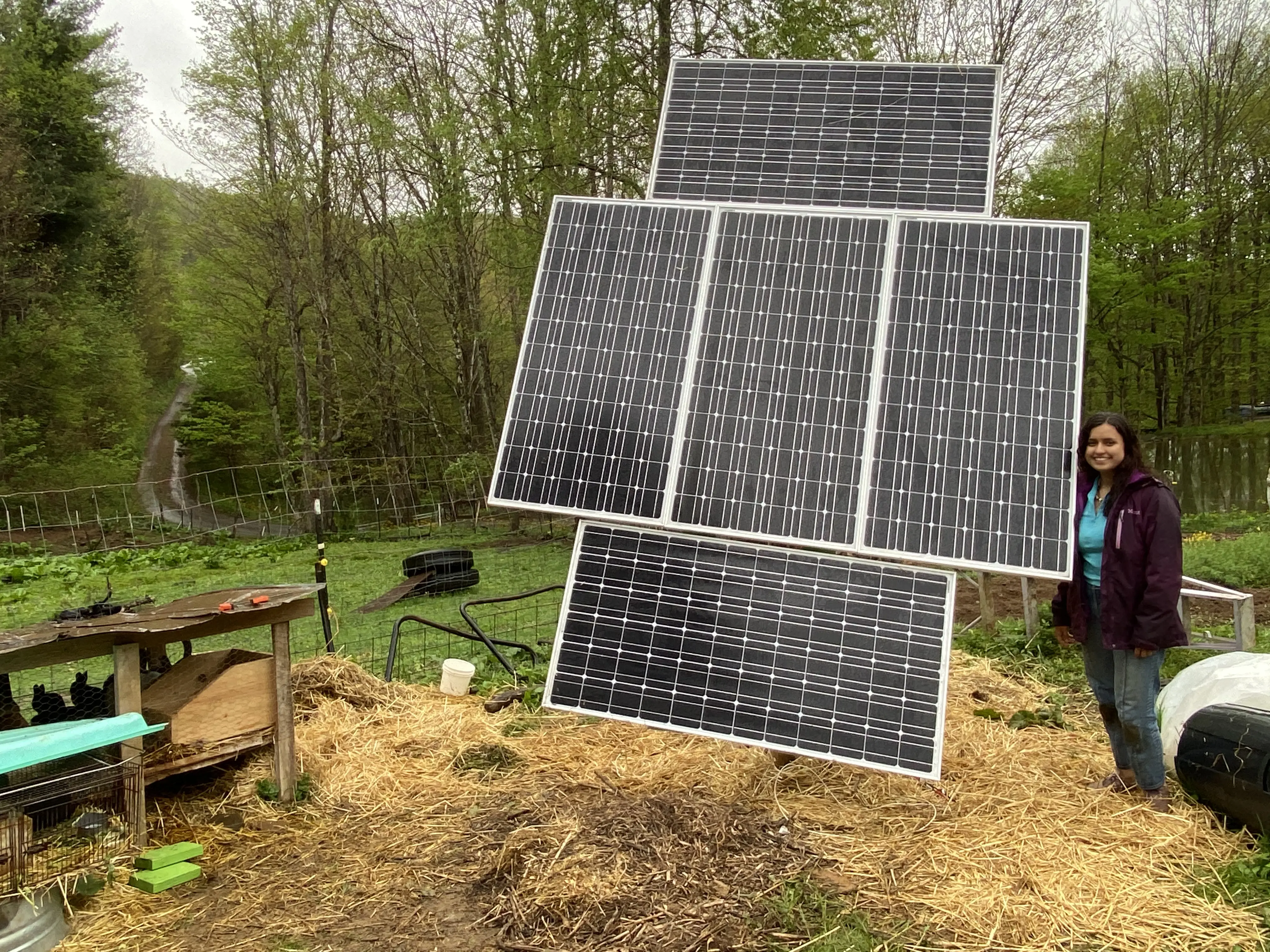
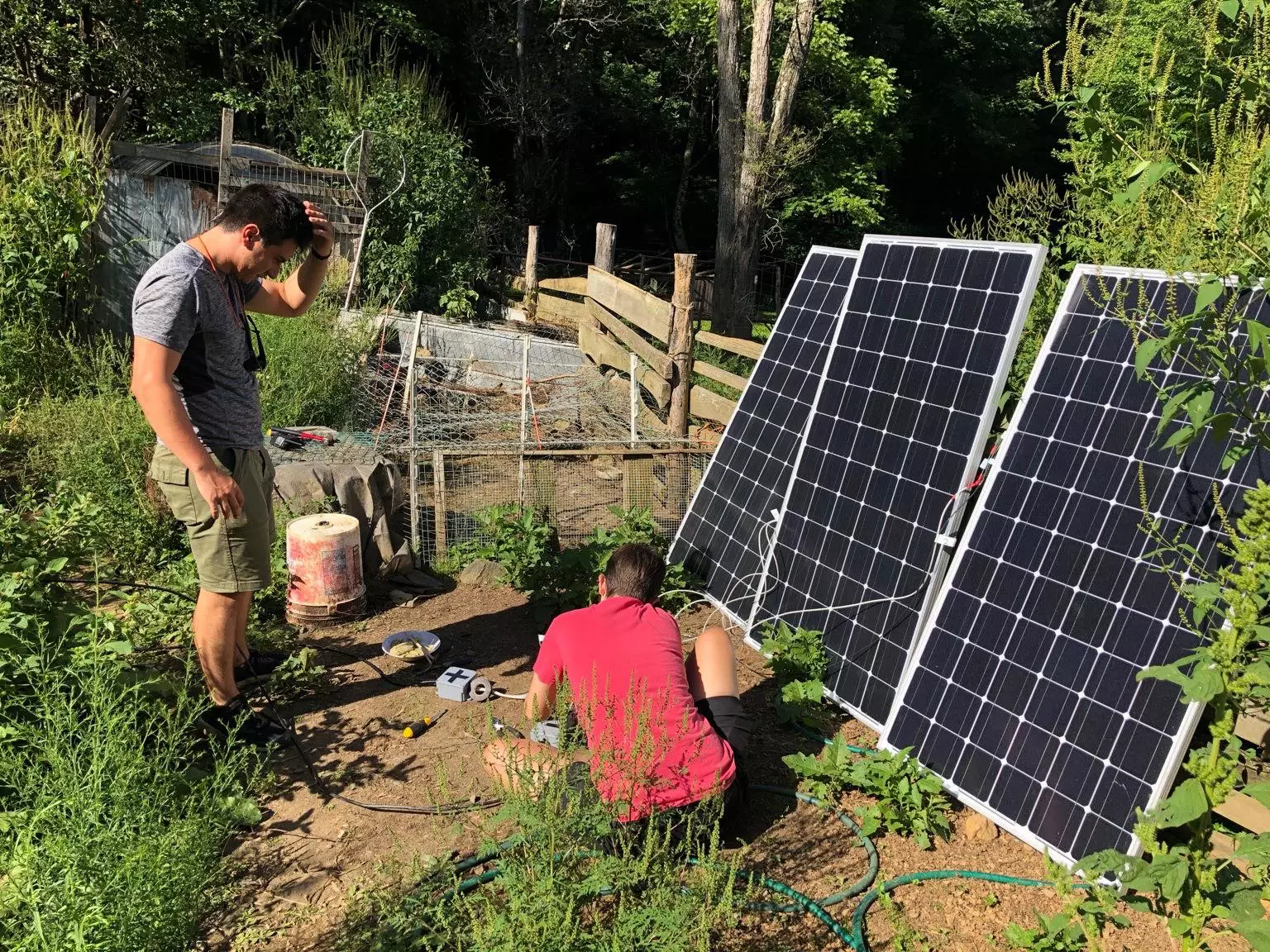
When I first arrived to Woodland Harvest, I helped connect a 1kW solar array and position them against a fence somewhat in the direction of the sun. It was a great feat at the time because we had some electricity input for a house of students, but it was definitely not a sustainable solution. As an engineer who has lived on a farm for nearly a year now, I recognize the importance of creating sustainable and durable products that will last. Especially if you are going to leave it with people who aren't engineers.
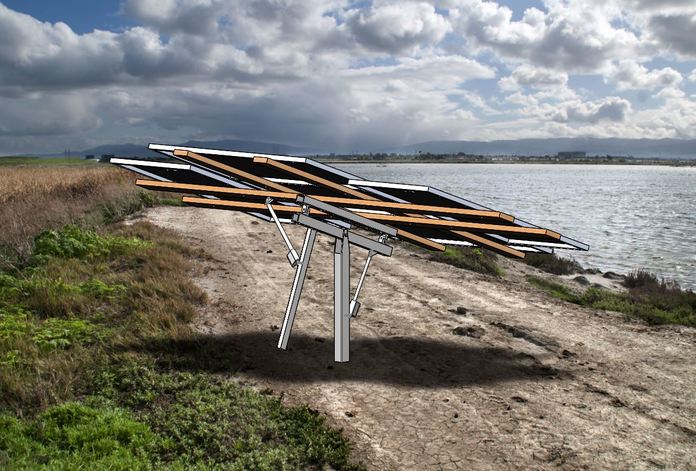
This meant that when my friend Leon and I were deciding what robotics project to tackle for our independent study, we knew we wanted to take the solar panels and make sure they were going to have a place where they wouldn't be knocked over by hurricane winds or chewed on by turkeys. Et voila, after taking some inspiration from off-the-shelf solar panel mounts, we designed a sun-tracking actuated mount that utilized a variety of materials from the farm and off-site.
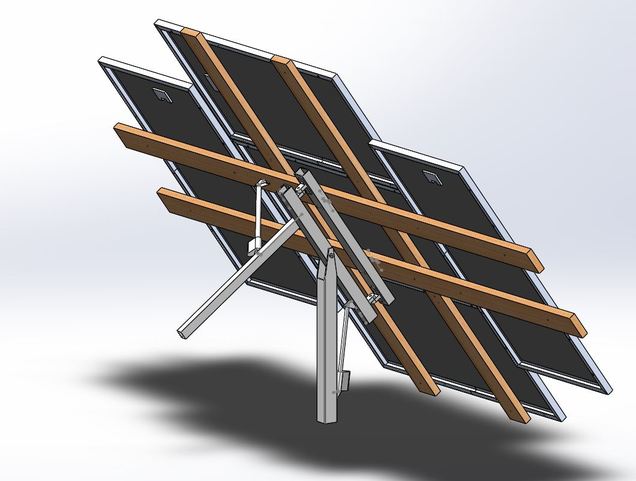
Designing the mount was a challenge for several reasons. We had strict constraints like minimizing how much metal we have to cut by hand (for our mental sanity), avoiding scenarios for galvanic corrosion between different metals, finding the cheapest yet effective bushings, and figuring out mounting locations for linear actuators to obtain the full range of motion. Unfortunately, we were also not able to obtain funding from Olin, so we needed to make our design as cost-effective as possible.
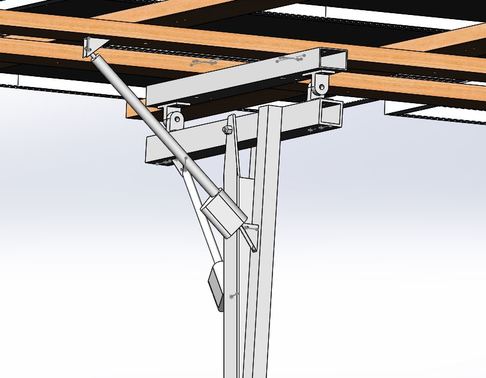
This project was a great opportunity to grow my Solidworks abilities even more. As an example, the hinge mechanism subassembly took a couple of design revisions to get to its current state. My initial approach was to DIY the hinges out of off-the-shelf bearings and bolts, and mount them on the aluminum square tubes to offset the costs of purchasing hinges (which are super expensive). This ended up creating unwanted intersections in the rotational paths, and there was an added risk of the fasteners becoming undone with the load of the panels over time. And adding standoffs to address this issue created another failure point if they aren't able to sustain load over time. In the end, I searched the vastness of the internet to find a good pair of hinges (40 dollars each, could be worse?) and replaced the aluminum with a steel tube of appropriate size.
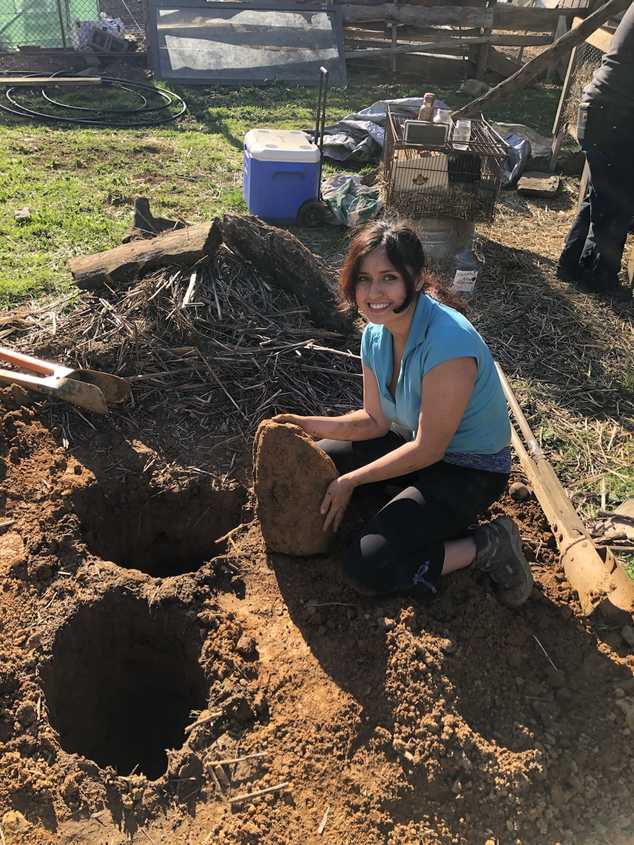
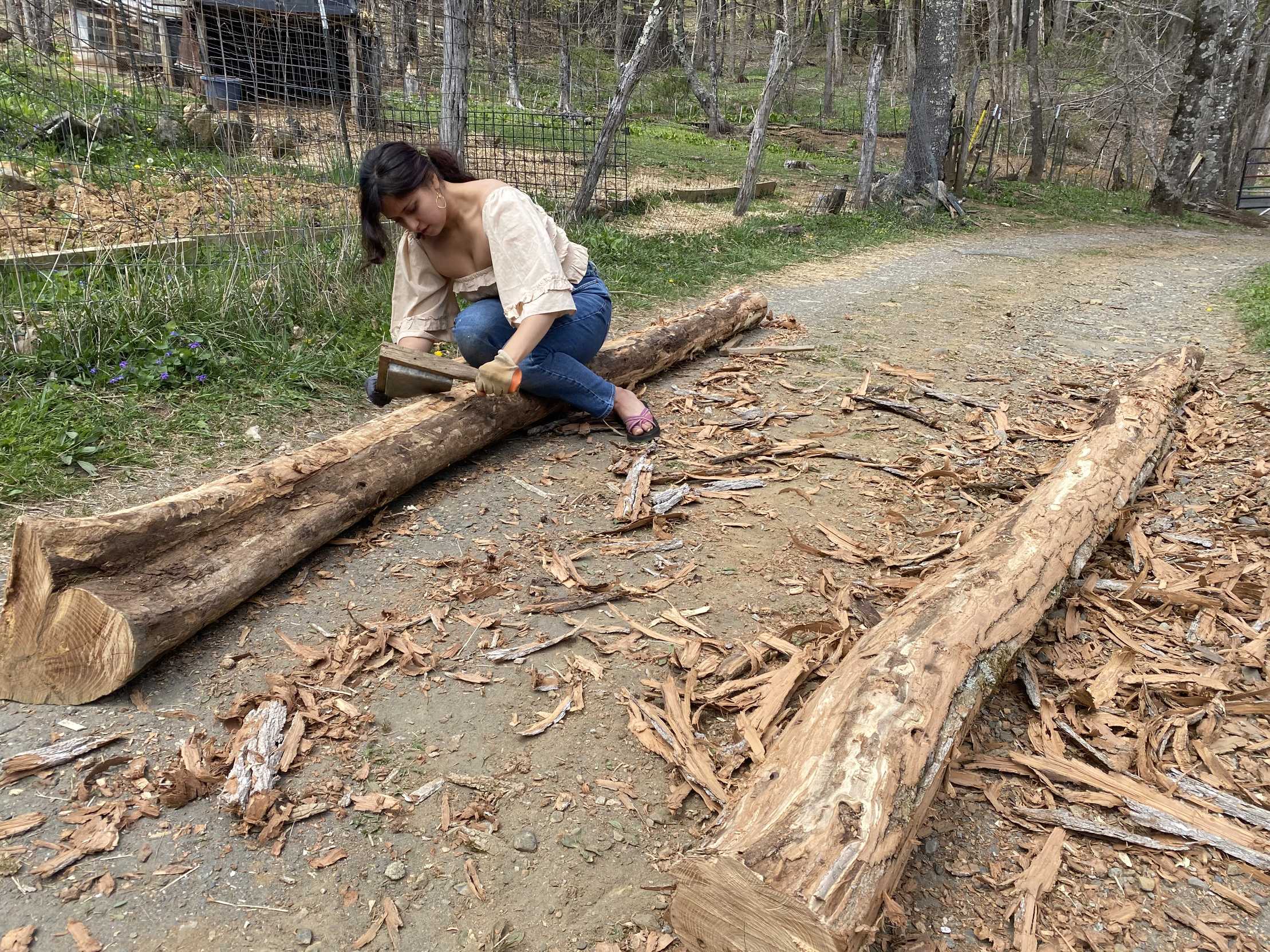
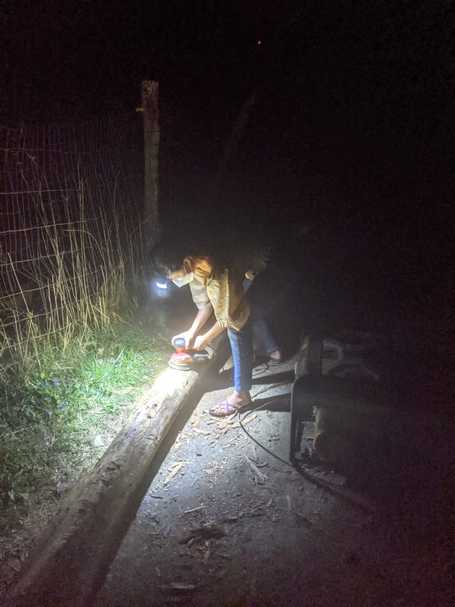
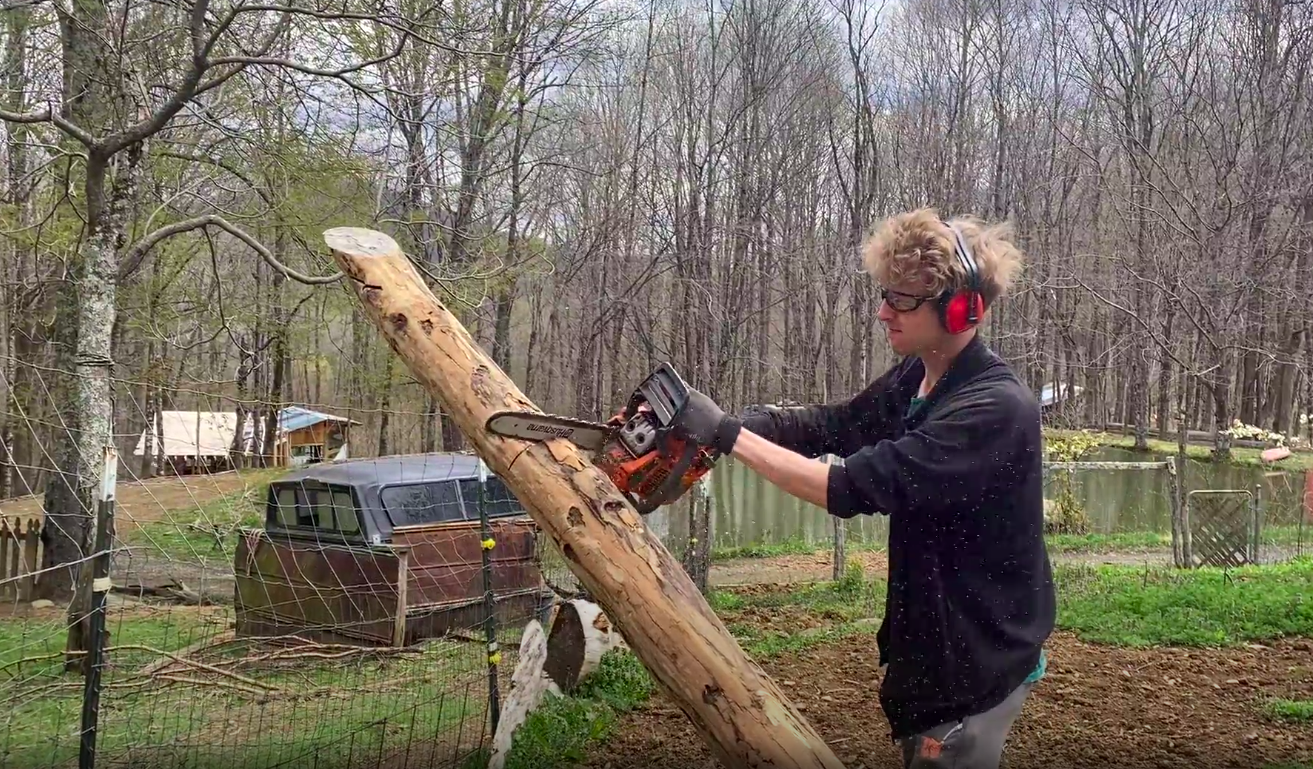
After finalizing the design, we bought all of the materials and have been putting in the physical labor of love for such a large project. This has included digging post holes two meters down, and preparing the locust posts that the entire mount will be bolted through.
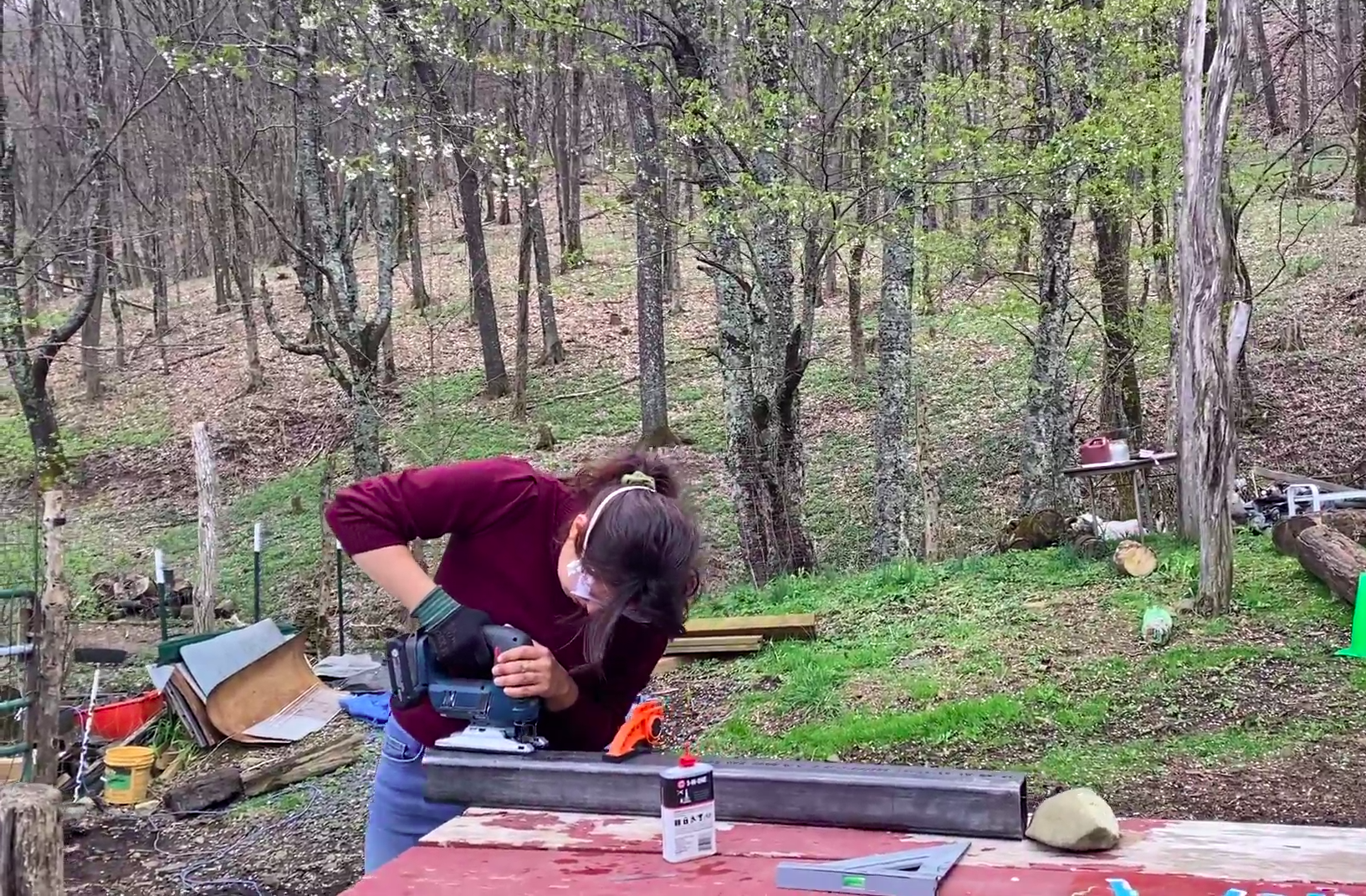
And we have, unfortunately, been cutting through some steel with a jigsaw (hang in there little guy!) and some 3-in-1 oil.
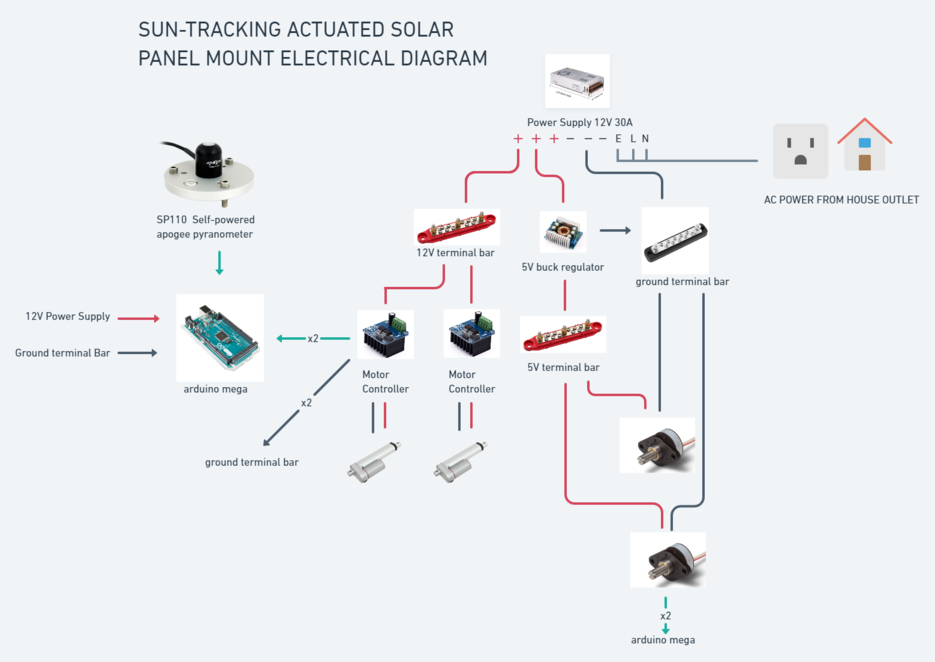
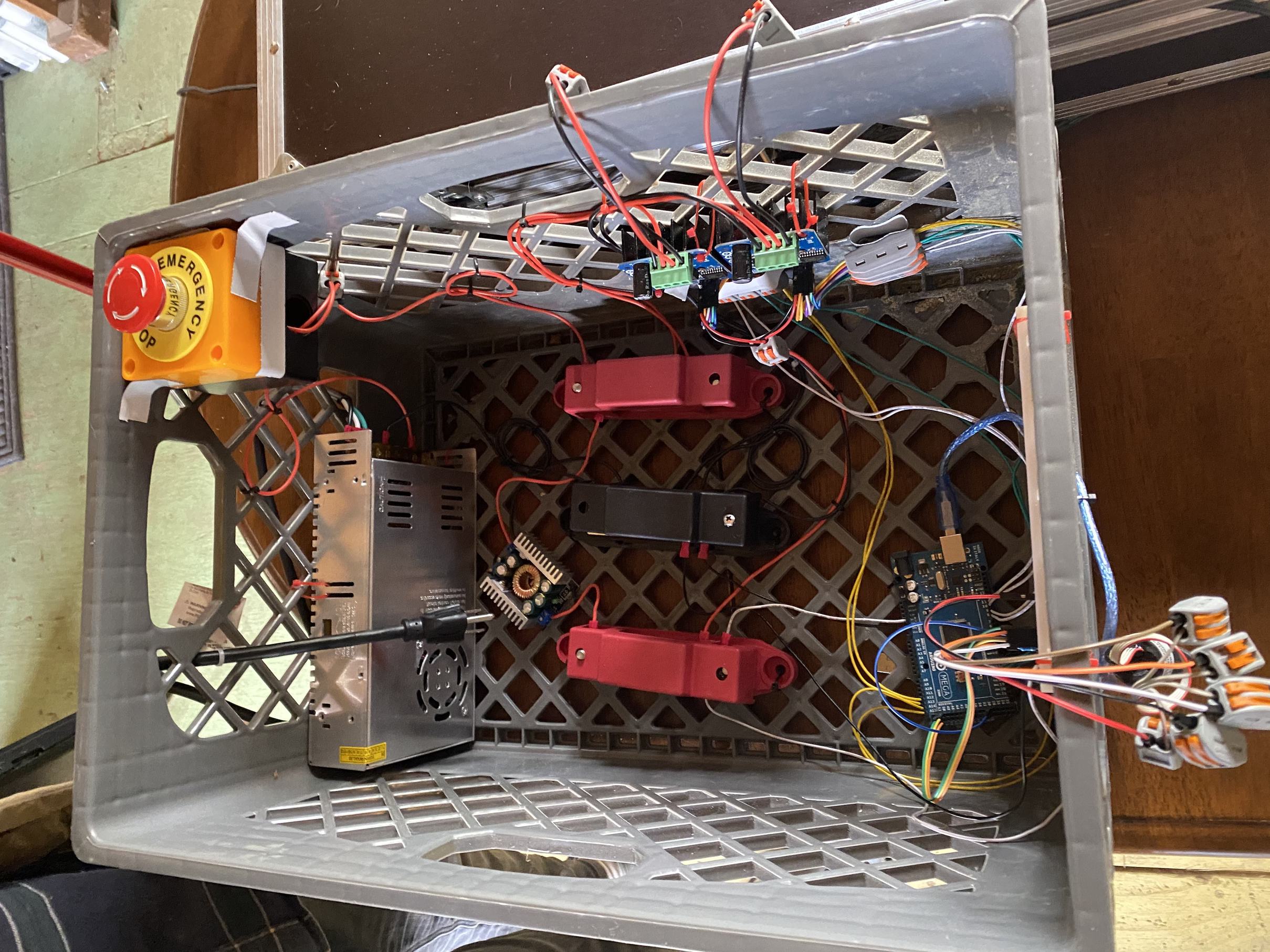
When we aren't building, we're working on the electrical system. We have our pyranometer reading and outputting a data array of solar radiation flux values, and their corresponding spherical coordinates. Our next step is to create and tune a PID loop that takes desired angles and the current encoder state, and outputs a voltage to the motor controllers to move the linear actuators.